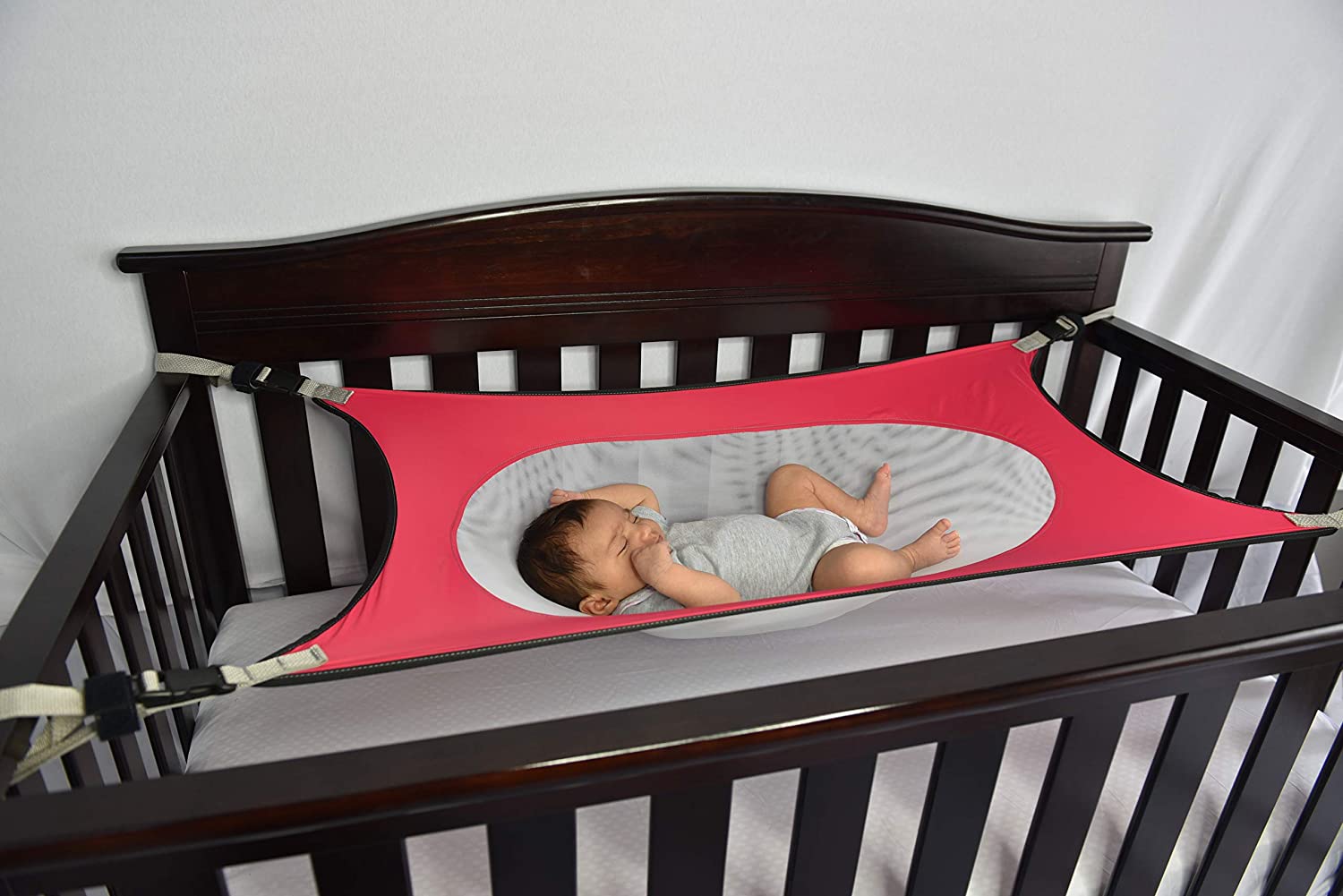Parenting
Are Mesh Cribs and Hammocks Safer for Infant Sleep?

Is there any data on [mesh hammocks and mattresses for cribs]? I’ve seen them around Facebook. I generally assume that [their safety claims] are made up, but you never know.
– Ally via Facebook
Can a crib hammock often known as a baby hammock or a baby crib hammock, prevent SIDS? I’ve seen these… The hammock looks like something I might want to sleep on, but I’m not sure how safe they are for infants, so I dug into it. Can a crib hammock really prevent sids?
My first stop was a scan of the peer-review literature for information about these and found only one study. That study references the hammock, but the study only included 23 infants and looked at oxygen levels during sleep. As we know 23 is way too small of a sample size to be able to say anything definitive, so we can’t really consider the results conclusive or generalizable. The authors of the study did raise an important point about the hammock’s safety: you can’t predict when a baby will start to roll over, and an infant trying to roll in a device like this is dangerous. For this reason, the authors don’t recommend it for unsupervised sleep, and that seems like pretty sound advice.
I asked a variety of experts about the safety of these products and each said they were untested in the peer-review literature in moderate or large cohort studies. They cautioned that these devices may lull parents into a false sense of security, and take some risks that the American Academy of Pediatrics’ (AAP) Safe Sleep guidelines do not recommend. So is there a crib hammock to prevent sids?
Each of the products you mentioned market themselves as breathable, as the mesh allows air to flow freely through the mattress, but Rachel Y. Moon, M.D. a SIDS researcher with the University of Virginia School of Medicine, and mother of two says that may not be true, “theoretically these are supposed to reduce rebreathing of carbon dioxide, but there’s no evidence that they reduce the risk of SIDS in that manner.” Dr. Moon notes that it’s currently unclear what role rebreathing CO2 has in SIDS when an infant is placed in an otherwise safe sleep environment, so there may not actually be any benefit to be had by using a mesh crib mattress.
Dr. Moon also notes that suffocation is not the same as Sudden Infant Death Syndrome, and if an infant is placed face down on a mesh mattress and their airway is partially blocked by their own body weight, suffocation is still a concern.
Dr. Scott Krugman, chair of the Baltimore County Child Fatality Review Team, and father of two, echos Dr. Moon’s reservations. “These are untested products and there’s no evidence that they are safe or safer than a firm traditional mattress.” He also adds, “the AAP does not recommend the use of any products or devices that are marketed to prevent SIDS.”
Pediatrician and mother of two, Dr. Jaime Friedman, says her advice to parents remains the same, “the AAP says the safest sleep environment for babies is to sleep alone, on their backs, on a firm mattress on a bare crib.” She also adds that unless recommended by a physician parents shouldn’t use any other devices in the crib to help a baby sleep, “like wedges, positioners or electronic equipment that claim that they can prevent SIDS.”
Sleep positioners, bed sharing, crib bumpers or other newborn hammock attaches can always be talked about with your pediatrician.
